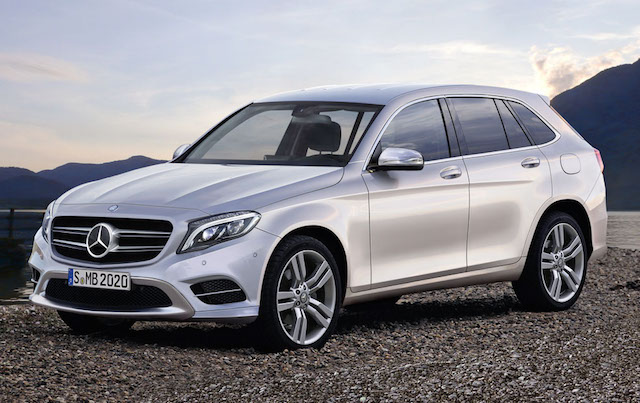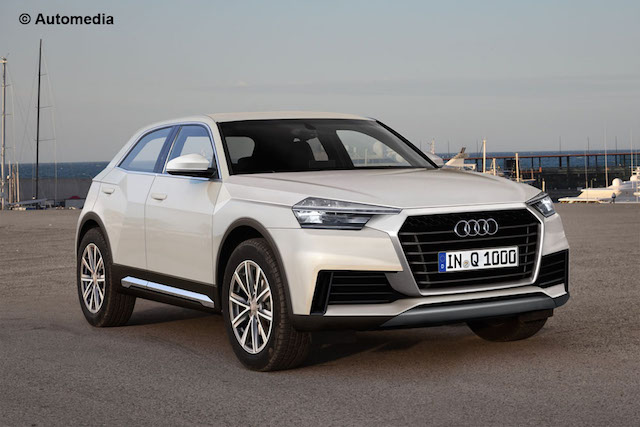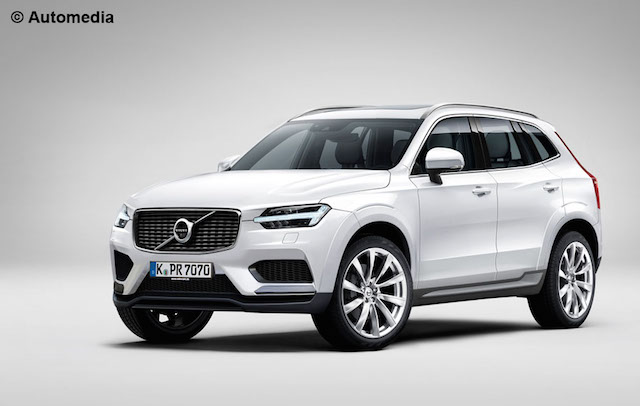
This is how designers working for European spy agency Automedia think the Mercedes-Benz GLC (above) will look when it lands in New Zealand this year. They have used pictures of the camouflaged GLC as a guide.
The illustrations of the Audi Q1, Mini Countryman and Volvo XC60 on this page are also based on many pictures of camouflaged prototypes.
The GLC replaces the GLK, which has only been available in left-hand drive. The GLC will be slightly larger than the GLK in order to make room for the smaller GLA and to better match rivals such as the BMW X3 and Audi Q5 in terms of space and comfort.
The car’s mechanical package will be shared with the new Mercedes-Benz C-Class. The base petrol engine may be a new turbocharged 1.8-litre four-cylinder, which will likely be found in a new GLC 250.
The current GLK’s turbocharged 2.1-litre four-cylinder diesel should carry over into a new GLC 250 BlueTEC, while a V6 should also remain in a new GLC 350.
It’s not clear if Mercedes-Benz will launch an AMG variant, although prototypes have been spotted testing alongside other AMG models.
Positioned slightly below the Q3, Audi’s Q1 (above) stands to be the smallest premium crossover on the market. The final design will draw from the Crosslane Coupe concept that debuted at last year’s Paris motor show, although the Q1 will launch as a five-door only.
The interior will be contemporary and it’s possible that instrumentation will be entirely digital. The Q1 is designed to give Audi a lead in the fast-growing small-crossover segment and is yet another model that will make use of the Volkswagen Group’s lightweight MQB architecture and its vast parts bin.
While the Q1 will offer a lot of technology, it won’t pack everything Audi has to offer – a buffer in equipment needs to be maintained between it and the Q3.
The backbone of the Q1’s powertrain line-up will be a turbocharged 1.4-litre four-cylinder petrol engine mated to a six-speed manual or a seven-speed dual-clutch automatic. There will also be a 1.4-litre TDI turbo-diesel.
An SQ1 will follow, powered by a 175kW 2.0-litre turbocharged four, and a plug-in hybrid is expected, too, using a 1.2-litre four-pot as its foundation. Front-wheel drive will be standard, but Quattro all-wheel drive will be an option. The 2016 Audi Q1 is expected to be revealed at the Frankfurt motor show in September.
Mini has only just released the facelifted Countryman, but it’s forging ahead with radical plans for an all-new model (above), due in 2017.
With the recent unveiling of the first-ever five-door Mini hatch, the carmaker can afford to be a little more daring with the new Countryman as the cars currently occupy a similar position in the market.
To help separate the two, the Countryman will take a more rugged approach to styling to tackle the challenge of the forthcoming BMW X1 replacement and new Audi Q1.
Expect much larger proportions, making the new Countryman the biggest Mini available when it arrives, with bulging wheel-arches and extensive use of rugged body cladding to mark it out as the new range-topper.
As with the recently launched new Mini hatch, the Countryman’s overhaul will continue under the skin. The versatile UKL1 front-wheel-drive platform will be used and can be adapted for all-wheel drive, too.
There’ll be various Cooper, S, SD and John Cooper Works models of the Countryman, all using the new downsized and turbocharged three-cylinder engines, which boost performance and efficiency.
Currently, only the new three-door and five-door Mini models are underpinned by the UKL1 platform, but a total of eight new model lines from the brand can be expected. A new Clubman, Convertible and Paceman are all under development.
Volvo’s forthcoming new-generation XC60 (above) will continue the styling theme of its bigger XC90 sibling when it surfaces next year, while retaining its own identity, according the company’s research and development chief.
The second-generation XC60 is currently under development but is a year or so away from a showroom debut as the Swedish carmaker focuses on the rollout of its all-new XC90 and development of its new sedan flagship, the S90 due to be revealed yet this year.
Volvo Car Group research and development senior vice-president Peter Mertens said that the company’s latest design language, which was previewed with a trio of concepts last year, will adorn the next compact SUV, but with a sportier feel.
“It will be a completely different vehicle, but of course it will have similarities in the face,” he said. “This is the new face of Volvo and you will see that in all our models. The design language for a 60 is different to a 90. The XC90 is more luxurious and upright, and the XC60 might be a bit sporty.”
Volvo’s Scalable Product Architecture (SPA) – the first non-Ford platform since the Blue Oval sold the company to Geely Holdings in 2010 – will form the basis for the XC60, as it does with the XC90.



